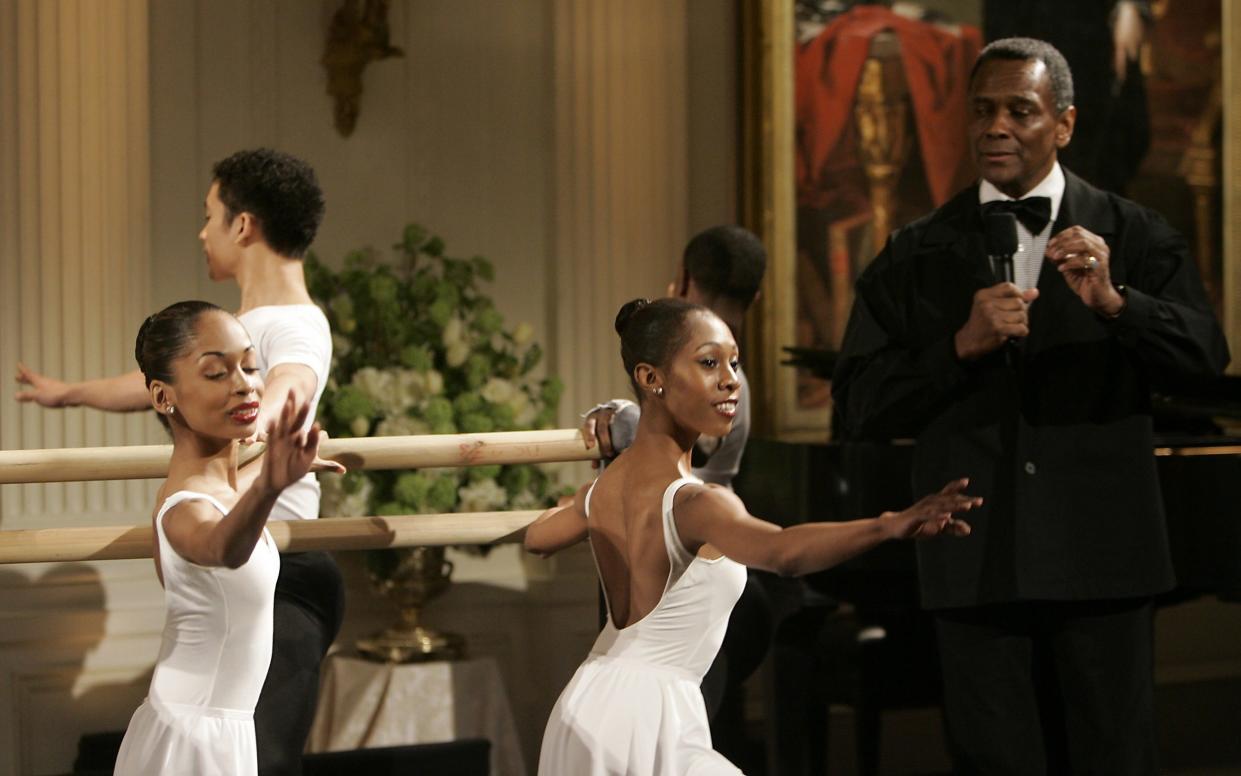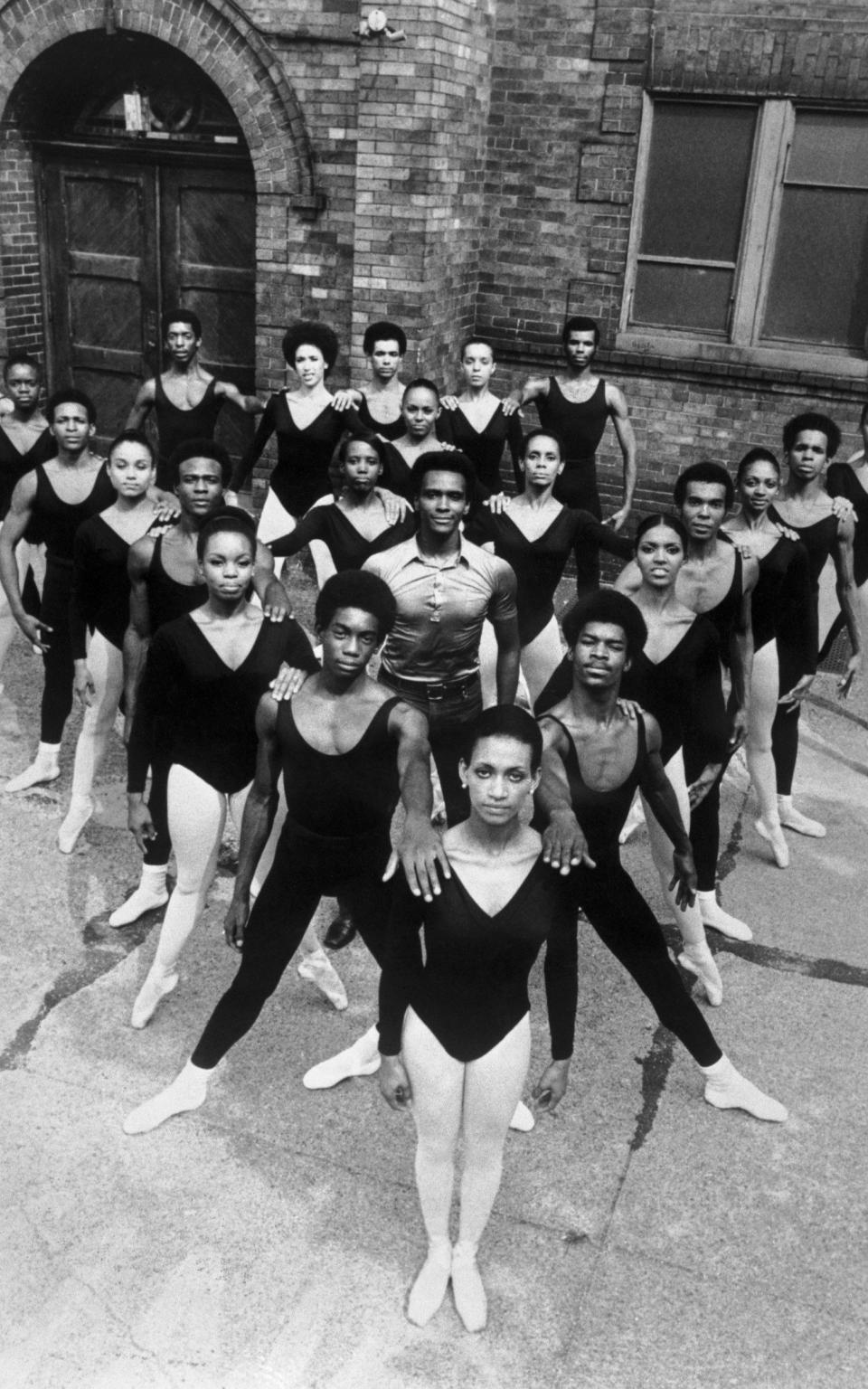How the first black classical ballet company ‘shocked the world’

- Oops!Something went wrong.Please try again later.
- Oops!Something went wrong.Please try again later.
When, in 2015, Misty Copeland became the first black principal ballerina at the American Ballet Theatre, she was heralded as a pioneer. Yet the widespread framing of her as a lone black talent in a sea of whiteness infuriated a group of dancers who felt their own contribution to ballet, made at the height of the Civil Rights movement, had been erased. Those five women – Lydia Abarca, Gayle McKinney-Griffith, Sheila Rohan, Marcia Sells and Karlya Shelton, all early members of the Dance Theatre of Harlem (DTH) – reunited during the pandemic to counter what author Karen Valby here strikingly terms “the gaslighting of one’s own history”.
Valby’s group biography, The Swans of Harlem, has a singular purpose: to write them back into history. She does so with righteous passion but in a narrative mishmash that jumps between third- and first-person, and includes some cloying comments from family members, along with more interesting snippets from the quintet’s frank contemporary chats. Valby also points out that racial discrimination is still rife, citing the recent case of Staatsballett Berlin’s ballet mistress telling black dancer Chloé Lopes Gomes to wear white make-up in order to “blend in”.
In 1969, reeling from the news of Martin Luther King’s assassination, George Balanchine’s protege Arthur Mitchell – who had previously been the first African-American dancer with the New York City Ballet – returned to his old neighbourhood, Harlem, to found a black ballet company. He envisioned a social revolution through dance; in blunt terms: “You’re not going to stick a needle in your arm when your instrument is your body.” Or as Valby puts it: “Let the gorgeous lines of his dancers’ bodies serve as fists in the air.”
Thus begins a remarkable underdog story as Mitchell scrabbles together funds and drills his company in a dingy church basement. He was determined to “shock the world”, and he did. The DTH danced at New York’s Lincoln Center; they performed at the White House and for Queen Elizabeth, the then-Queen Mother at the 1974 Royal Variety Performance; they partied with Mick Jagger and Stevie Wonder.
But it’s the personal reflections from our five dancers that help Valby’s account to take flight. Just standing in a room filled with other black ballet dancers was a revelation, they explain: proof that they weren’t alone. It was the DTH girls’ idea to colour their pointe shoes and tights – which then all came in pale pink – with dye and tea leaves to match their darker skin tones.

Yet this was hardly a progressive paradise. Mitchell maintained some of the most toxic facets of the ballet world: he was a tyrannical leader, creepily possessive of his stars, and favoured paler, impossibly skinny girls, maintaining those brutal European beauty standards. He justified a punishing training regime by arguing that, to overcome prejudice, they had to do everything 10 times better.
Mitchell used Abarca, his exquisitely beautiful, light-skinned prima ballerina to charm donors and cultural tastemakers; she was even photographed by Lord Snowden. Abarca’s mixed feelings about being his muse, and the other girls’ mingled admiration and envy, percolate throughout. Riveting, too, is the power struggle between Mitchell and Abarca. She dreamed of being famous and earning enough money to get her family out of their rough neighbourhood. Mitchell kept her on a tight leash and a pitiful salary, believing that the company should be the star. He’s such a fascinating figure that there’s some danger of him stealing the spotlight here.
Which is not to say that the women’s stories aren’t rich. They range from working with Bob Fosse and on the movie The Wiz to a backstreet abortion, an abusive marriage, a conversion to Islam and alcoholism. As a result, the book feels overcrowded: I wish Valby had made the space to expand on her passing comment that, in the age of Black Power, some were opposed to the company trying to succeed in “the white man’s art form”.
But this feels, rightly, like the beginning of a wider conversation. Copeland herself has since held an event with these DTH alumni, publicly recognising their role in paving the way for her, and casting a spotlight on other wrongly forgotten artists. There are so many stories still to tell; these efforts might help the next black ballerina to find her wings.
The Swans of Harlem is published by Manilla at £20. To order your copy for £16.99, call 0808 196 6794 or visit Telegraph Books

